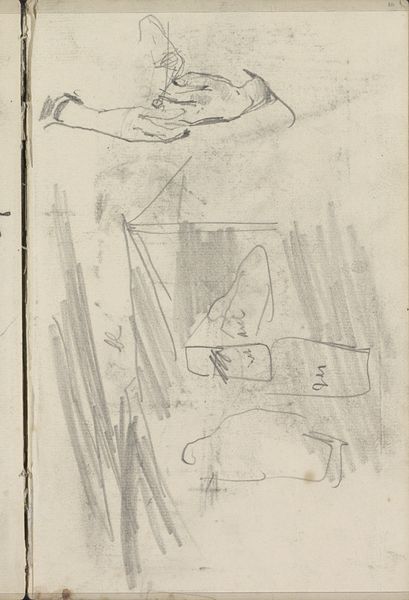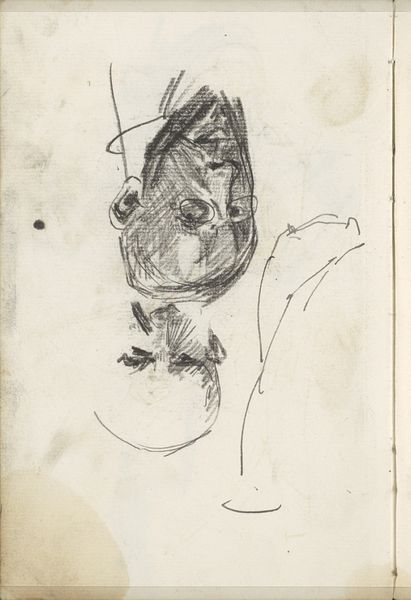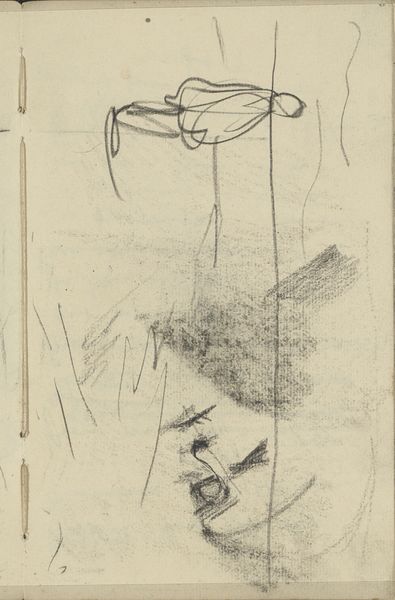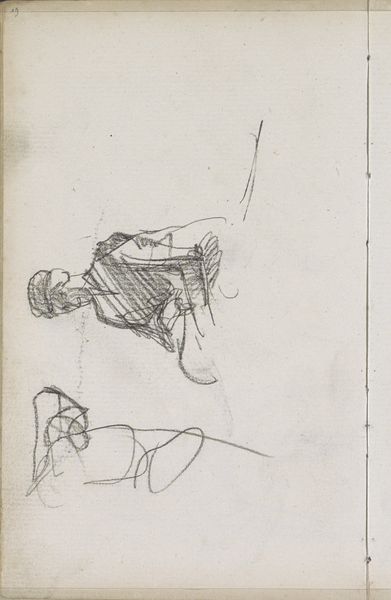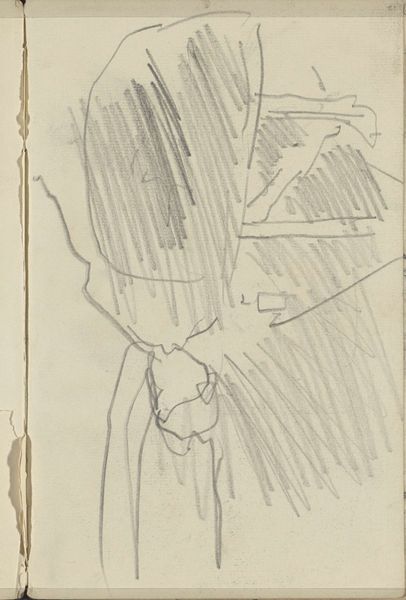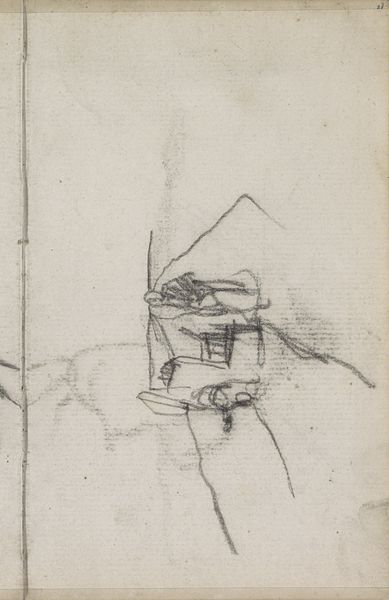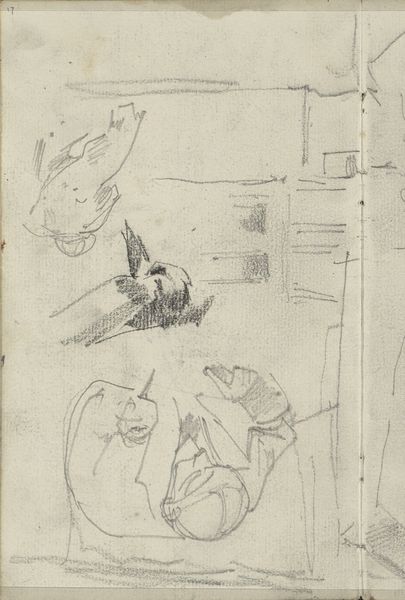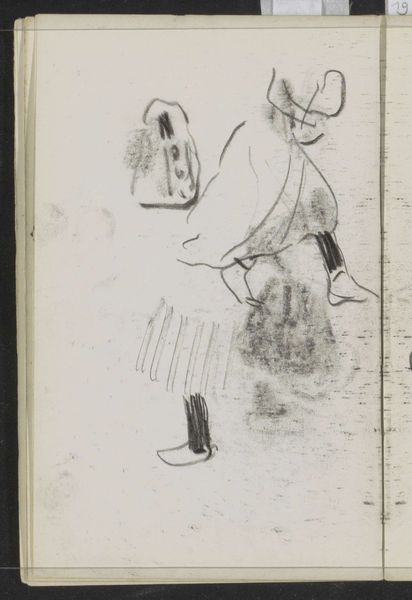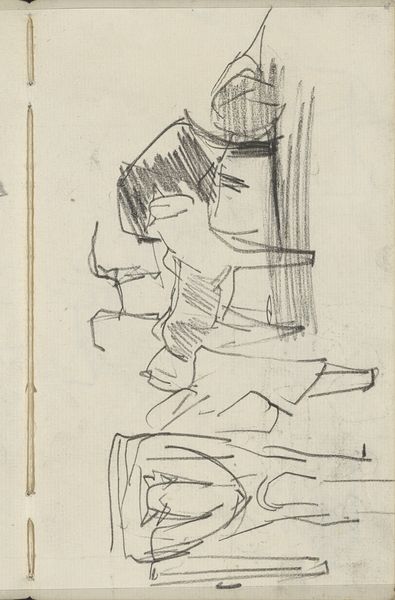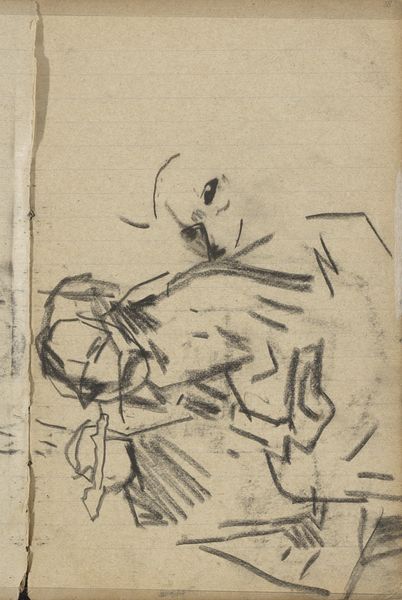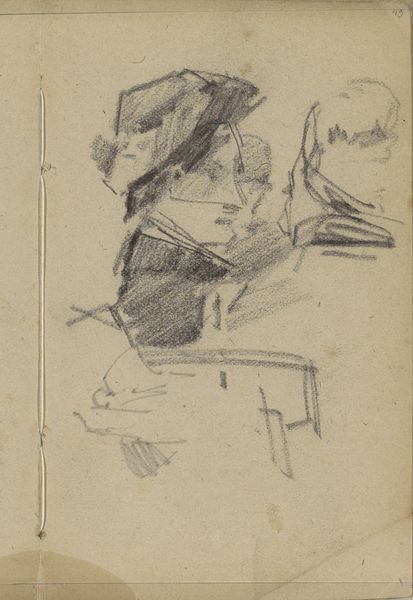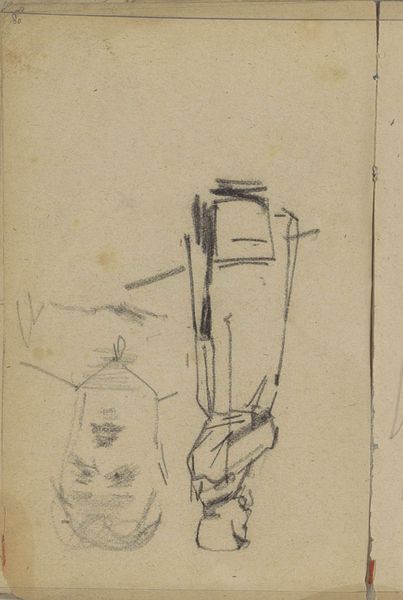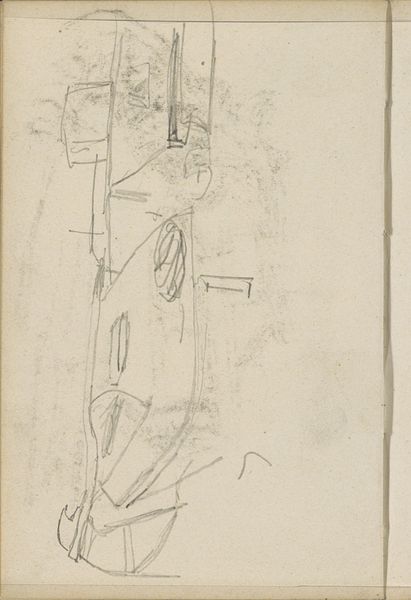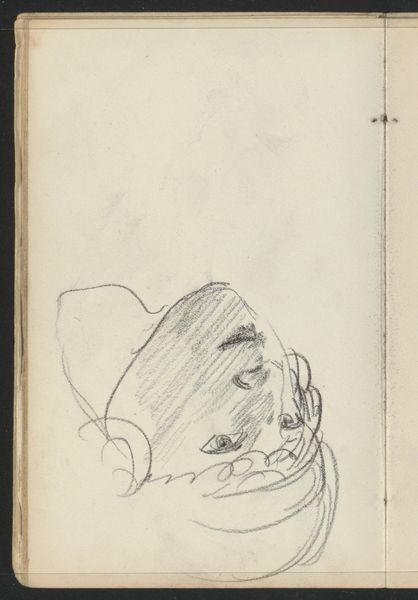
Copyright: Rijks Museum: Open Domain
Curator: This is a work by George Hendrik Breitner, a graphite drawing on paper entitled "Figuren, mogelijk in een etablissement," which translates to "Figures, possibly in an establishment," created sometime between 1886 and 1898. It’s part of the Rijksmuseum collection. Editor: My initial impression is a sketch caught mid-thought; a fragment of a bustling social space, maybe. The lack of clear definition lends a sense of transience to the subjects. Curator: Breitner was fascinated by documenting modern life, and drawings such as this offer a direct view into his working process. Notice the swift, economical lines, indicative of quick observation and capturing fleeting moments in working-class Amsterdam. Editor: Indeed. Consider, though, who these figures were likely to be within the urban landscape Breitner depicts. Did Breitner intend to elevate these subjects in some way, or simply record their existence within an indifferent social system? Were they even paid fairly? Curator: Fair questions! Graphite was relatively inexpensive and easily accessible; the immediate and ephemeral nature of drawing aligned with Breitner’s Impressionistic pursuit to capture momentary experiences in the modern industrialized city. We can't ignore the socio-economic dimensions influencing the availability and usage of this particular drawing medium and technique. Editor: The stark, unrefined quality reflects the harsh realities of life during this period, suggesting more than just artistic method, doesn't it? How does Breitner’s representation speak to class distinctions of the era and to our gaze on those figures? I keep circling back to a central question, whose narratives do we find absent? Curator: That is insightful, bringing a critical lens to what Breitner chose to represent and how. I believe that a drawing like this provides source material for deeper understanding of Impressionism within its context, prompting consideration of labor, industrialization, and representation of marginalised people in Amsterdam during Breitner's time. Editor: I appreciate your pointing that out! Thinking of Breitner, I am always pushed to grapple with historical accounts in a more meaningful and useful way. It pushes for a perspective beyond simple observations of form and surface, revealing historical narratives otherwise erased from popular memory. Curator: Yes. These quick drawings allowed Breitner to understand form and texture, and explore tonal contrast within an inexpensive medium to make studies, so a material understanding offers insights too. Editor: Thank you, that really clarified many perspectives for me. Curator: You're most welcome!
Comments
No comments
Be the first to comment and join the conversation on the ultimate creative platform.
